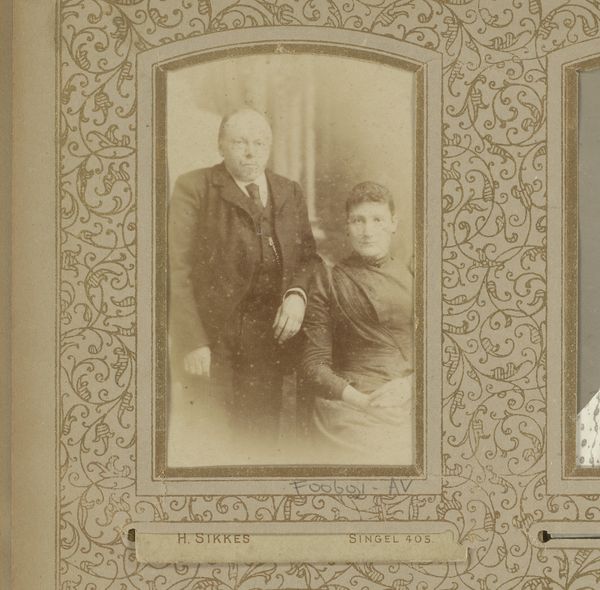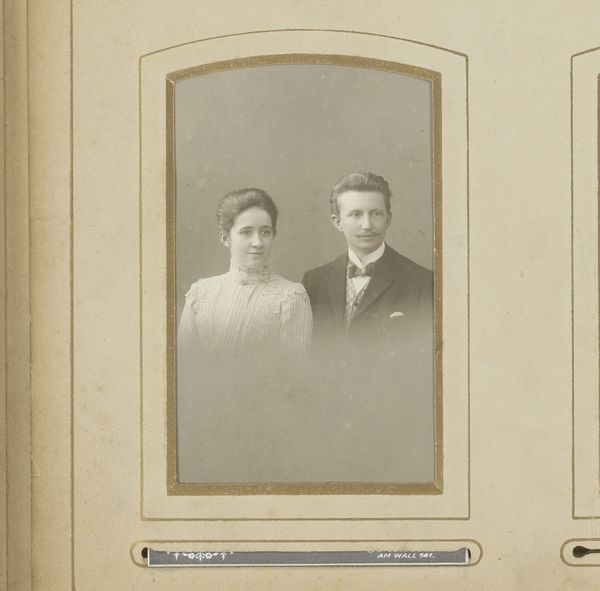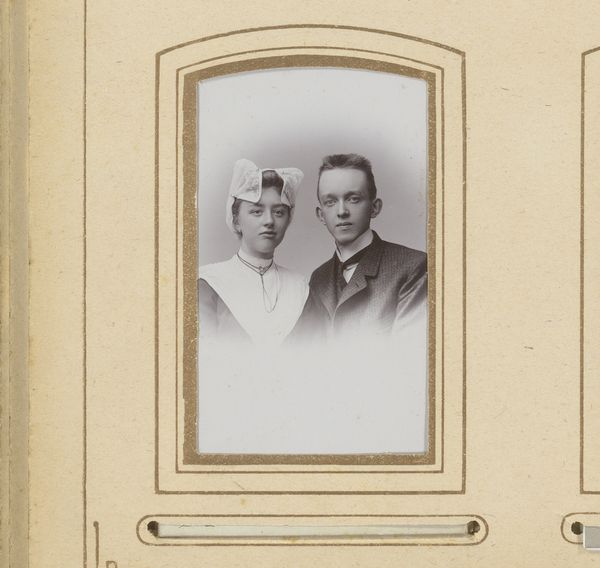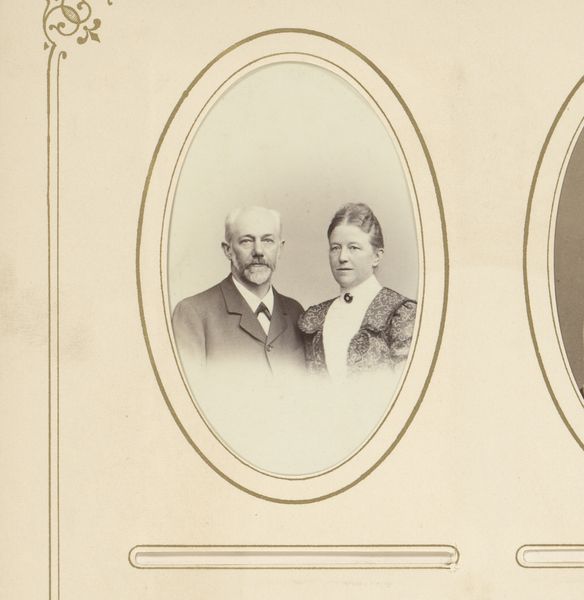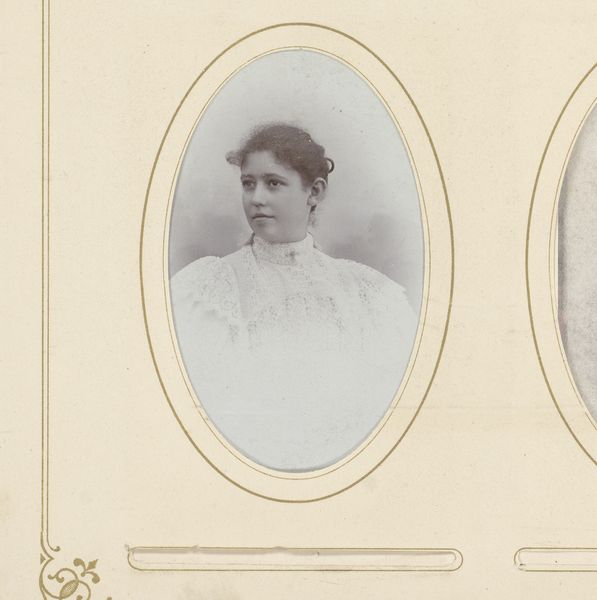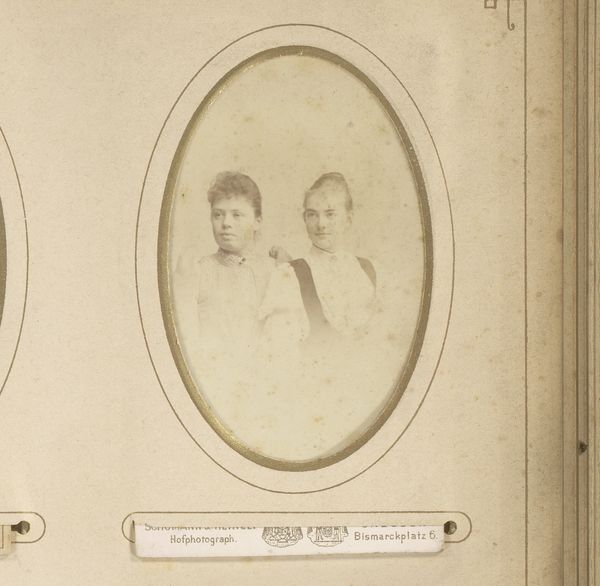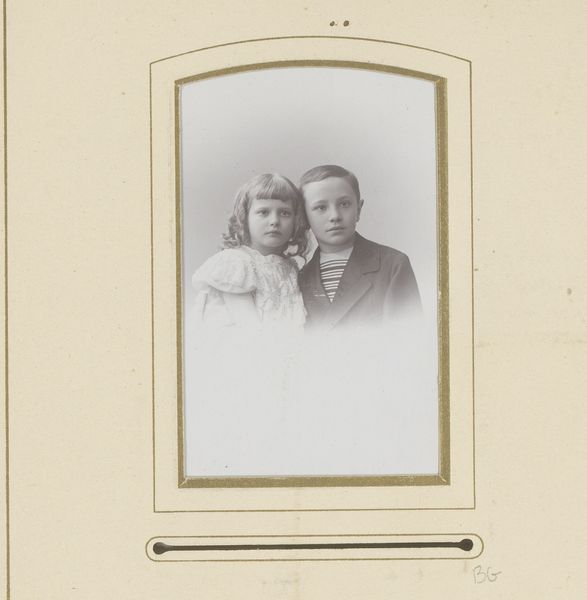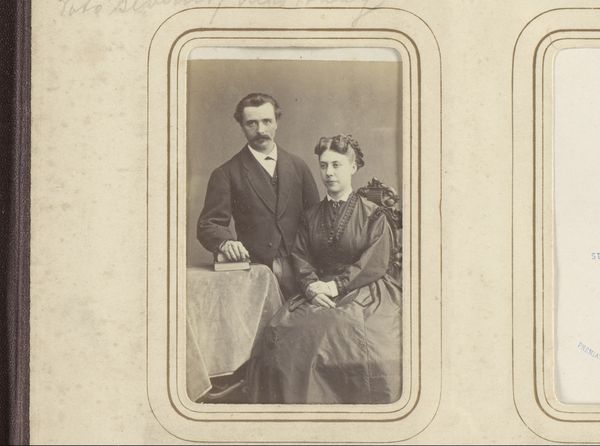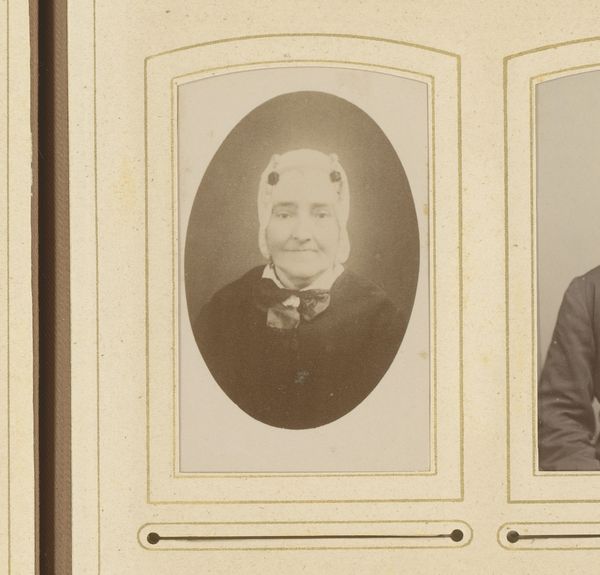
photography
#
portrait
#
photography
#
19th century
Dimensions: height 87 mm, width 53 mm
Copyright: Rijks Museum: Open Domain
Editor: This is a photograph from somewhere between 1888 and 1900, titled "Portret van een vrouw en een man", credited to W. Koolstra. The sepia tone and formal composition give it such a serious feel. What stories do you think are held within this piece? Curator: Absolutely. This studio portrait offers a fascinating glimpse into the social dynamics of the late 19th century. I'm immediately drawn to the expressions of the subjects, the carefully constructed power dynamics, the visible codes of class. What can we infer from their postures, their attire, the very act of commissioning a portrait? Do you see any clues to their social standing? Editor: Well, their clothing looks pretty formal; the man is in a suit, and the woman’s high-collared dress seems very proper. Maybe middle class or upper-middle class? Curator: Precisely. And what does it tell us about gender roles of the era that their gazes are directed forward with that almost unreadable look on their faces? How did societal expectations and power imbalances influence their representation and perhaps their very identities? Think about how they wished to be seen! Editor: I hadn't considered how much control they might have exerted on their presentation. The photo seemed like just a documentation. Curator: And that assumption can be part of a deeper dive! By engaging critically with images like these, we start deconstructing not just the photograph itself but also the narratives it perpetuates, consciously or not. What new meaning can this artwork evoke if viewed through contemporary lenses, informed by today’s theories on identity? Editor: Viewing it in that way is quite powerful; it reveals assumptions that might have been invisible before. It becomes a mirror reflecting social and cultural beliefs. Curator: Exactly! By understanding these dynamics, we gain deeper insights into the work itself. Thank you for that enriching observation.
Comments
No comments
Be the first to comment and join the conversation on the ultimate creative platform.

